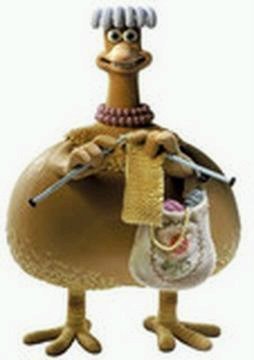 I got bored with the beige and brown stocking cap, so I made it an inversion hat. An inversion hat is one where the ribbing is at the end, or top, of the hat instead of at the brim or beginning. Once you get used to shaping in ribbing, it’s pretty easy to do, but I still like to plan it out. Here’s the worksheet I did prior to beginning the “inversion”. If you can see it, there’s a little rosette at the lower left, which shows what the top of the hat should look like.
I got bored with the beige and brown stocking cap, so I made it an inversion hat. An inversion hat is one where the ribbing is at the end, or top, of the hat instead of at the brim or beginning. Once you get used to shaping in ribbing, it’s pretty easy to do, but I still like to plan it out. Here’s the worksheet I did prior to beginning the “inversion”. If you can see it, there’s a little rosette at the lower left, which shows what the top of the hat should look like.
Then here’s a picture of the finished hat, with the top looking like the sketch (if you can tell, despite my crummy photography).
There are a couple of key points to decreasing in ribbing to get straight lines, rather than ribbing that skews off, sometimes very attractively, to one side or the other.
1. Since the knit stitches protrude and the purl stitches recede, to make the decreases less visible, decrease by knitting the last knit stitch over the first purl in a K2tog manner. To keep it even, on the other side of the purl “field” you then slip the last purl and the first knit stitches in a knitwise manner, and knit them together, making sure the knit stitch is the one on top. By doing this, you get straight lines of knit arrowing in towards the center top of the hat. If your knitting style, which is probably different from my ECU self-taught manner, has you scratching your head over this, reverse them – maybe doing the SSK first and the k2tog second makes more sense.
2. This also causes decreases to occur in a big hurry, so it’s necessary to think about how many rows of knitting you’ll need to do between decrease rows so that your hat does not decrease too rapidly and then not fit.
3. Some people think it’s OK to decrease in the purl field, and sometimes it can be. I’ve always thought that left a bit of a visible lump in the middle of the purling, which I don’t particularly care for.
…and a bonus hint – I could have done the top in all garter stitch for a little interest. I’ve found that if I decrease on the knit stitches on the RIGHT side, they are less visible. The reason they do is because in garter rounds, it’s the purl row that protrudes and the knit row recedes; there fore, the knit row hides the decrease.
So, for the sake of specificity, here’s my little inversion hat pattern:
Sock weight yarn oddballs (no idea how many ounces)
Size 2 US circs, 16”, 1 set size 2 dpns
1 crochet hook, size F US for finishing.
Gauge, mine was 10r and 6 sts/inch. It is pretty flexible, just as long as the hat fits and the top decrease area works out to be about 4” in diameter/2” radius. (Don’t let the geometry terms stress you out)
Cast on 102 sts, knit in rounds for 7-8 inches. Check back down to CO edge and insert marker at approximate spot for beginning of round on current round.
Switch to K2P4 and knit 10 rounds in ribbing.
Decreases:
1st Dec. Round: K1, (K2tog, P2, SSK,) repeat pattern between parentheses around to next to last purl stitch. Slip one stitch, remove marker, put stitch back on original needle, insert marker (now one stitch before where it used to be) and do final SSK (now AFTER the marker). 68 sts, or close enough for horseshoes.
K 10 rounds in K2P2, as established.
2nd Dec. Round: K1, (K2, SSK) repeat around as above, switching to dpns. You will now have all knit stitches on your dpns, 34 of them (or close enough for horseshoes).
K 1 round even.
3rd Dec. Round: K1, (K2tog, SSK), repeat pattern in parentheses around to last stitch and just knit it. Should be about 19 sts.
Snip a long tail and pull yarn through and pull tight. Weave in ends.


No comments:
Post a Comment